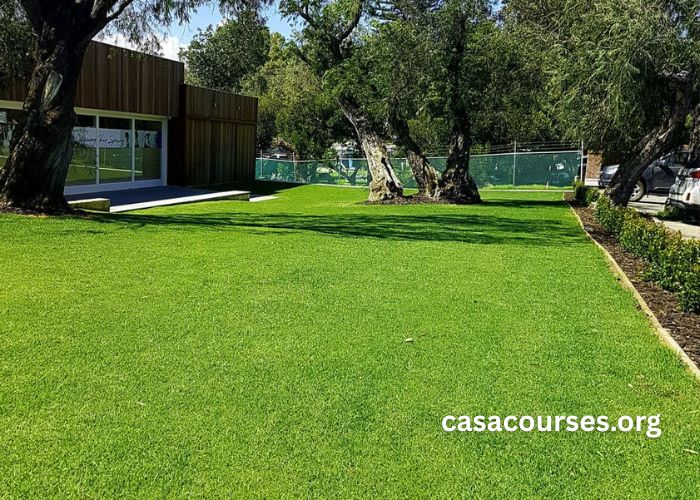In the digital age, establishing an online presence is vital for businesses, organizations, and individuals alike. One of the most effective ways to enhance that presence is through blogging. However, not all blogs are created equal. The concept of Blog Turf emphasizes the importance of quality content, strategic planning, and audience engagement to ensure that your blog stands out in a saturated market. This article will explore various aspects of Blog Turf, answering crucial questions to help you navigate the landscape of blogging effectively.
What Is Blog Turf and Why Is It Important?
Blog Turf encompasses a variety of practices aimed at creating and promoting quality blog content. At its core, it involves understanding your niche, knowing your audience, and producing articles that resonate with readers. The significance of Blog Turf lies in its ability to establish authority, foster engagement, and drive organic traffic.
In a world where consumers are bombarded with information, a well-structured blog can serve as a reliable resource. By focusing on the principles of Blog Turf, you can create posts that not only inform but also inspire and engage your audience. For instance, a gardening blog that shares in-depth articles on sustainable practices can attract readers who are passionate about eco-friendly living, establishing itself as a trusted authority in that niche.
How to Identify Your Niche in Blog Turf?
Identifying your niche is a fundamental step in the realm of Blog Turf. A niche refers to a specific area of interest that you want to focus on, allowing you to target a particular audience effectively. To determine your niche, start by considering your passions, expertise, and the needs of your potential audience.
For example, if you are an avid traveler with a knack for photography, your niche might be travel photography. This focus allows you to create specialized content that resonates with readers who share similar interests. Additionally, research competitors within your chosen niche to understand their strengths and weaknesses. By identifying gaps in the content they provide, you can tailor your blog posts to fill those voids, making your blog more appealing to potential readers.
It’s essential to remember that a well-defined niche helps in building a loyal audience, as people are more likely to return to a blog that consistently delivers content relevant to their interests. This approach aligns perfectly with the ethos of Blog Turf, emphasizing quality over quantity.
What Types of Content Should You Create in Blog Turf?
When it comes to Blog Turf, the type of content you create plays a crucial role in engaging your audience. A diverse content strategy can include how-to guides, opinion pieces, listicles, interviews, and case studies. Each type serves a different purpose and can attract varying segments of your target audience.
For instance, how-to guides are particularly effective in providing valuable information that readers can apply in their own lives. If your blog focuses on cooking, a detailed recipe with tips can be immensely helpful to your audience. On the other hand, opinion pieces allow you to express your viewpoint on trending topics, sparking discussions and inviting reader interaction.
Interviews with industry experts can also add credibility to your blog while providing unique insights that resonate with your readers. Additionally, incorporating multimedia elements such as images, videos, and infographics can enhance the reader’s experience and keep them engaged longer. The goal of Blog Turf is to create varied content that not only informs but also captivates and inspires your audience.
How to Optimize Your Blog for SEO in Blog Turf?
Search Engine Optimization (SEO) is a vital aspect of Blog Turf that cannot be overlooked. Proper SEO practices enhance the visibility of your blog in search engine results, making it easier for potential readers to discover your content.
To optimize your blog, start by conducting keyword research to identify relevant terms and phrases that your target audience is searching for. Tools like Google Keyword Planner or SEMrush can help you find keywords with high search volume and low competition. Once you have identified these keywords, strategically incorporate them into your blog posts, including titles, headings, and throughout the content.
Additionally, optimizing images with alt tags, using internal and external links, and ensuring that your blog loads quickly are crucial factors that contribute to better SEO performance. Regularly updating your content and engaging with your audience through comments and social media can also signal to search engines that your blog is active and relevant. By prioritizing SEO in your Blog Turf strategy, you can significantly enhance your blog’s reach and effectiveness.
What Role Does Audience Engagement Play in Blog Turf?
Engaging your audience is a fundamental component of Blog Turf. Building a community around your blog can foster loyalty and encourage readers to return for more content. Audience engagement can take many forms, including responding to comments, encouraging social sharing, and actively participating in discussions on social media platforms.
One effective way to engage your audience is by asking open-ended questions at the end of your blog posts. This invites readers to share their thoughts and experiences, creating a sense of connection and involvement. Additionally, hosting giveaways or contests can also incentivize readers to engage with your blog, fostering a sense of community.
Using social media to promote your blog and interact with your audience is another crucial aspect of engagement. Share your blog posts on platforms where your target audience is active, and encourage them to join the conversation. The more you interact with your audience, the more invested they will feel in your content and your brand. By prioritizing audience engagement in your Blog Turf strategy, you can create a loyal readership that actively supports your work.
How Can You Measure the Success of Your Blog Turf Efforts?
To determine the effectiveness of your Blog Turf strategy, it’s essential to track various metrics that indicate your blog’s performance. Analytics tools, such as Google Analytics, provide valuable insights into visitor behavior, including page views, bounce rates, and average session duration.
Monitoring these metrics allows you to understand which content resonates most with your audience. For instance, if certain posts consistently receive higher traffic and engagement, it may indicate that you should create similar content in the future. Additionally, keeping track of social media shares and comments can provide further insights into audience preferences.
Another important metric to consider is the growth of your email subscriber list. Email marketing is a powerful tool for maintaining connections with your audience and promoting new content. If your subscriber list is steadily growing, it suggests that your blog is providing value to readers.
Ultimately, the key to measuring success in Blog Turf lies in setting clear goals and regularly reviewing your performance against those benchmarks. By doing so, you can make informed adjustments to your content strategy that align with your audience’s interests.
What Are the Common Mistakes to Avoid in Blog Turf?
As you navigate the world of Blog Turf, it’s crucial to be aware of common pitfalls that can hinder your blog’s success. One of the most prevalent mistakes is neglecting quality in favor of quantity. While it may be tempting to produce a high volume of content, delivering well-researched, thoughtful articles will resonate more with your audience.
Another mistake is failing to promote your content effectively. Creating great posts is only part of the equation; sharing them through social media, email newsletters, and other channels is essential for reaching a broader audience. Additionally, ignoring SEO best practices can lead to low visibility in search results, making it challenging for readers to find your content.
Finally, neglecting to engage with your audience can create a disconnect between you and your readers. Building a community around your blog requires interaction and responsiveness. Avoiding these common mistakes will put you on the right path toward a successful Blog Turf journey.
How to Evolve Your Blog Turf Strategy Over Time?
The landscape of blogging is continuously evolving, and adapting your Blog Turf strategy is essential for long-term success. Staying updated on industry trends, reader preferences, and changes in SEO practices will help you maintain relevance and authority in your niche.
One effective way to evolve your strategy is to solicit feedback from your audience. Regularly asking for their opinions on content topics, formats, and frequency can provide valuable insights. This feedback can guide your content creation efforts and ensure you’re meeting the needs of your readers.
Additionally, experimenting with new content formats, such as podcasts or video blogs, can also help you reach a wider audience. By diversifying your content and embracing new trends, you can keep your blog fresh and engaging. Continually reviewing and adjusting your Blog Turf strategy will enable you to remain competitive in an ever-changing digital landscape.
Conclusion
In conclusion, Blog Turf represents a vital aspect of online content creation that requires careful planning, execution, and engagement. By understanding your niche, optimizing for SEO, engaging with your audience, and continually evolving your strategy, you can build a successful blog that stands out in the crowded digital space.
Embracing the principles of Blog Turf will not only enhance your online presence but also establish you as an authority in your field. As you navigate your blogging journey, remember that consistency, quality, and audience engagement are key components to achieving your goals. With a solid approach to Blog Turf, you can create a vibrant online community that supports and values your content.



